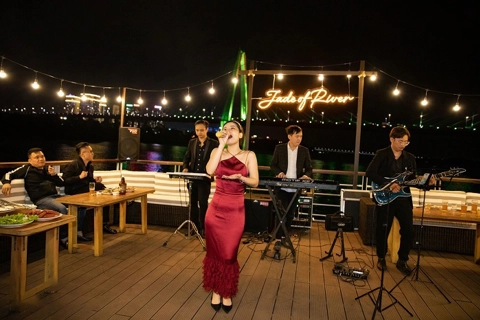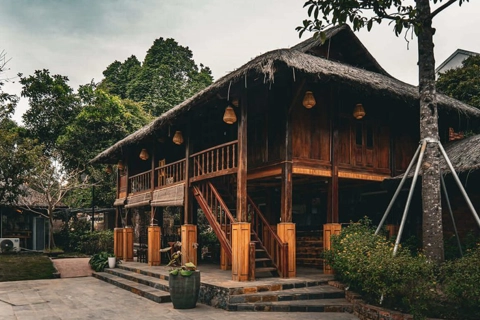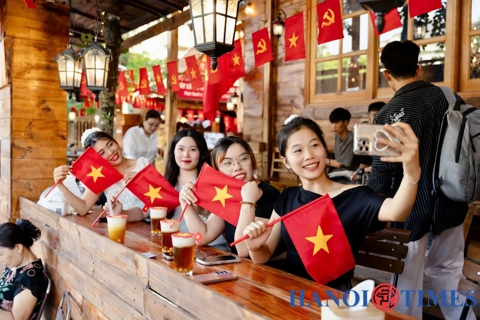Hanoi craft villages urged to apply new technologies to promote products
The application of new technologies is expected to promote the products of more than 300 craft villages as well as receive feedback effectively.
Craft villages in Hanoi should change their mindset toward applying new technologies to improve their products with a view to better meeting customers' tastes, Director of the Hanoi Department of Tourism Tran Duc Hai was quoted by Hanoimoi as saying.
The Hanoi Department of Tourism has launched an application to introduce handicraft villages’ products with 3D technology, helping visitors view details of the products, the process of making them and information about artisans.
The application is expected to promote the products of more than 300 craft villages as well as receive feedback effectively, contributing to improving the quality of tour packages and inviting foreign and domestic tourists to buy the products when coming to the capital city.
| People in Chuong village, Thanh Oai district of Hanoi produce conical hats. Photo: Giang Son |
Tran Duc Hai said that Hanoi's craft villages attract thousands of tourists every year, becoming "a fertile ground" for travel agencies to exploit and look for new tourism products and destinations.
Yet, most travel companies just take tourists to the craft villages, then introduce their history and the products, which is, Hai said, exploiting only the "superficial values" of the villages.
He affirmed that with the trend of smart tourism, applying scientific and technological achievements will help Hanoi’s craft villages promote products, improve models and packaging to get tourists' satisfaction.
Hanoi’s more than 1,300 craft villages are a great resource for tourism development. The municipal Department of Tourism is recommending these villages focus on attracting both foreign and domestic visitors.
According to the department, Hanoi’s traditional craft villages are manufacturing a wide range of gifts and souvenirs, such as Bat Trang pottery, Van Phuc silk, Phu Vinh bamboo and rattan, Quat Dong embroidery, Chuon Ngo shell inlay, Ha Thai paint, Chuong conical hat, among others.
However, the craft villages’ items have fallen short of becoming a singular highlight and unique gifts for visitors.
Very few products of the craft villages can make their way to souvenir and gift stores in the capital city’s iconic destinations such as the Temple of Literature, Hoa Lo Prison, Thang Long Imperial Citadel, among others.
Truong Quoc Hung, chairman of the UNESCO Travel Club Association, suggested that instead of relying on foreign tourists, the craft villages need to cater to the demand of domestic visitors, especially when developing domestic tourism is one of the important solutions to restore and normalize Vietnam's tourism industry.
According to the municipal Department of Tourism, in the near future, Hanoi will host many international events. From now on, traditional craft villages need to build many high quality products with specific characteristics to serve a large number of domestic and foreign tourists to the capital city.











